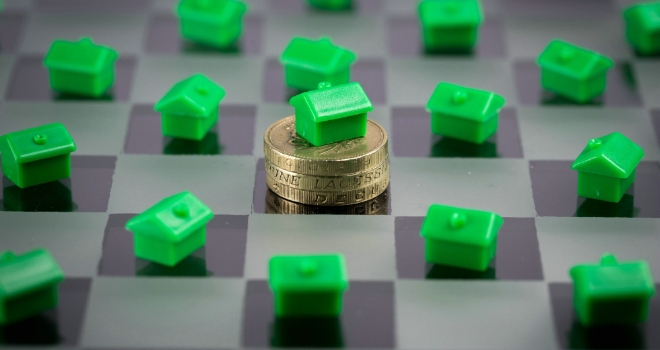
Robert Gardner, Nationwide's Chief Economist, said: “While UK house prices edged up 0.2% during the month of April, the annual rate of house price growth moderated to 4.9% from 5.7% in March. This slowdown returns the annual pace of house price growth to the fairly narrow range between 3% and 5% that had been prevailing since the summer of 2015.
It may be that the surge in house purchase activity resulting from the increase in stamp duty on second homes from 1 April provided a temporary boost to prices in March. However, it is possible that the recent pattern of strong employment growth, rising real earnings, low borrowing costs and constrained supply will tilt the demand/supply balance in favour of sellers and exert upward pressure on price growth once again in the quarters ahead.
Recent surge in housing market activity driven by tax changes
Robert Gardner continues: “There was a surge in the number of residential property transactions in March (which includes mortgaged and cash purchases) ahead of the introduction of the additional stamp duty levy on second properties from 1 April 2016. There were 165,400 transactions in March, an all-time high, some c11% higher than the previous peak of c149,000 recorded in January 2007.
Estimates from the Council of Mortgage Lenders suggests that mortgage lending also rose sharply, to almost £26bn in March, up 43% from the £18bn recorded in February. If confirmed by Bank of England data later this week, this would suggest a strong outcome, up nearly 60% year-on-year and also well above recent highs of c£22bn per month recorded in early 2015, though still well below the all-time high of £34.9bn recorded in June 2007.
The increase in mortgage lending is likely to have been driven by a sharp increase in Buy to Let (BTL) investors bringing forward their purchases before the stamp duty changes took effect. BTL has accounted for an unusually high share of lending in recent months, at c19% of lending in the three months to February, but the strength of activity suggests its share could surpass 25% in March.
Viewing the transactions and mortgage lending data together suggests that, while BTL lending is likely to have risen strongly in March, a large proportion of the boost to house purchase activity came from cash buyers.
Cash purchasers have become a more significant part of the market since the financial crisis, accounting for around c35% of all transactions since 2008 (compared with around 25% in 2006/7). Cash investors would have also been better placed to buy properties in the relatively short period of time between the stamp duty announcement at the November Autumn Statement and the implementation on 1 April.
House purchase activity is likely to fall in the months ahead given the number of purchasers that brought forward transactions. The recovery thereafter may also be fairly gradual, especially in the BTL sector, where a wealth of other policy changes, such as the reduction in tax relief for landlords from 2017 are likely to exert an ongoing drag.
Moreover, there is a risk that the surge in house purchases in recent months will exacerbate the shortage of homes on the market – according to RICS the number of properties on estate agents’ books was already close to all-time lows on data extending back to the late 1970s.”
Russell Quirk, eMoov Founder and property expert, comments: “The growth rate of UK house prices was always going to slow from the stamp duty fuelled acceleration witnessed last month.
There was a new record peak in the number of transactions in March, up 11% on the previous peak is seen in 2007, so that says it all really. But despite a surge in demand in the run-up to the Chancellor's buy to let and second home stamp duty penalty being imposed on March 31st, April prices have still risen. That may surprise some.
It remains to be seen if there is now a lull in demand across the market consequential to this 3% levy being applied, however with interest rates at a relentless low and mortgage products now at record-breaking attractiveness to all, including first-time buyers, I don’t believe the market will slow as much as forecast over the coming months.
Yes, the rate of growth may have dropped annually, currently at 4.7% compared to 5.7% this time last year and we may, therefore, see a kink in the road in Q2 overall with regard to the rate of increase.
But looking month to month, prices are still on the up and the average UK house price is still at its highest level over the course of the last year.
This continual growth since last April wasn’t brought on by the changes to stamp duty and, although we may see a slight dip in activity over the coming month, prices are likely to carry on increasing for the foreseeable future. So my bet is firmly placed that 2016 will see a very positive rise in values overall, notwithstanding the regional differences that indexes such as these always mask.”
Alex Gosling, CEO of HouseSimple.com, said: “April's increase in the stamp duty on second homes fired demand substantially in March. With the deadline past, price rises in April are returning to more normal levels. And as uncertainty over the EU referendum continues, we may see this lull in the market continue.
It’s an interesting time for the property market as we don’t really know where it’s going to go. What we do know is supply levels are stagnant. Whilst this goes in the favour of sellers, if we’re to see more first time buyers come into the market, more homes need to be built.”





